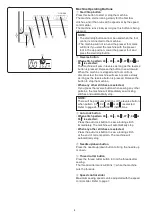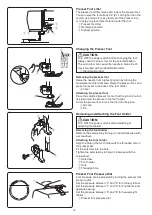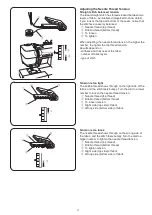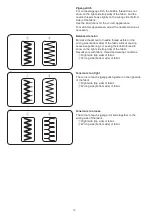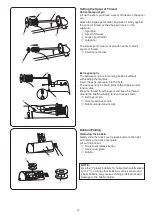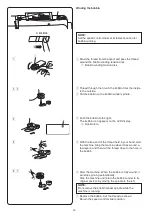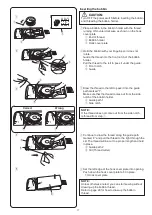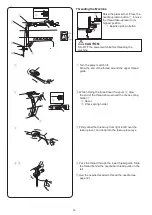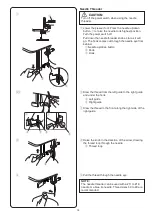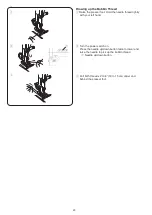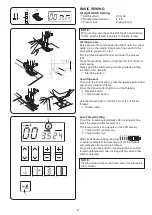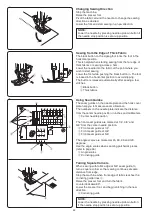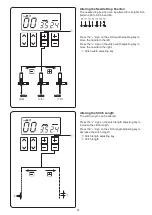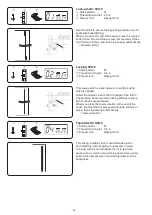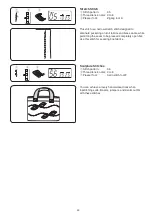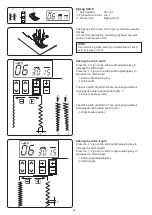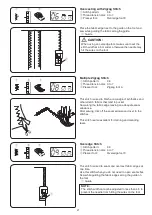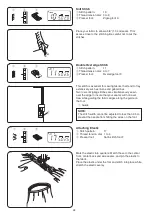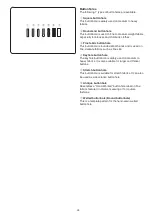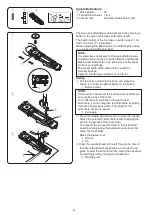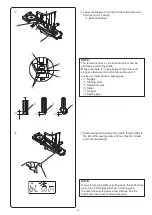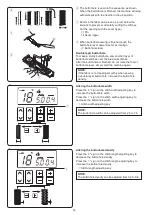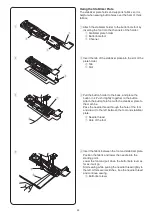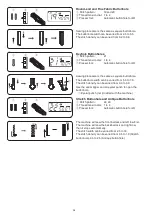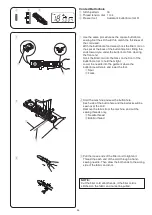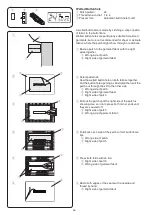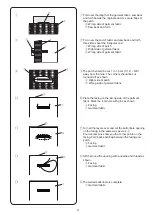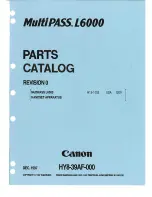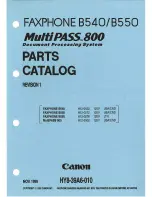
22
Turning Square Corners
When sewing with fabric edge at 5/8˝ seam guide, to
turn a square corner so that sewing continues at same
distance from edge.
Stop the machine when front edge of fabric reaches the
cornering guide lines
y
.
Raise the presser foot and turn the fabric
counterclockwise 90°.
Lower the presser foot, and begin stitching in the new
direction.
y
Cornering guide
NOTE:
Lower the needle by pressing needle up/down button
if the needle stop position is set at up position.
y
Using Seam Guides
The seam guides on the needle plate and the hook cover
plate help you to measure seam allowance.
The numbers on the needle plate indicate the distance
from the center needle position in inches and millimeters.
q
Center needle position
The front seam guides are marked at 1/4˝, 3/8˝ and
5/8˝ from the center needle position.
w
Front seam guide at 1/4˝
e
Front seam guide at 3/8˝
r
Front seam guide at 5/8˝
The angle scales are marked at 45, 60, 90 and 120
degrees.
Use the angle scales when seaming patchwork pieces
(refer to page 46).
t
Angle scales
y
Cornering guide
y
w
e
r
y
t
q
Changing Sewing Direction
Stop the machine.
Raise the presser foot.
Pivot the fabric around the needle to change the sewing
direction as desired.
Lower the foot and start sewing in a new direction.
NOTE:
Lower the needle by pressing needle up/down button if
the needle stop position is set at up position.
w
q
Sewing from the Edge of Thick Fabric
The black button on the zigzag foot locks the foot in the
horizontal position.
This is helpful when starting sewing from the far edge of
thick fabrics or sewing across a hem.
Lower the needle into the fabric at the point where you
wish to start sewing.
Lower the foot while pushing the black button in. The foot
is locked in the horizontal position to avoid slipping.
The button is released automatically after sewing a few
stitches.
q
Black button
w
Thick fabrics
Summary of Contents for DC6100
Page 1: ...Instruction Book...
Page 2: ......
Page 58: ...56 Stitch Chart...
Page 59: ......
Page 60: ...812 800 032 EN...

